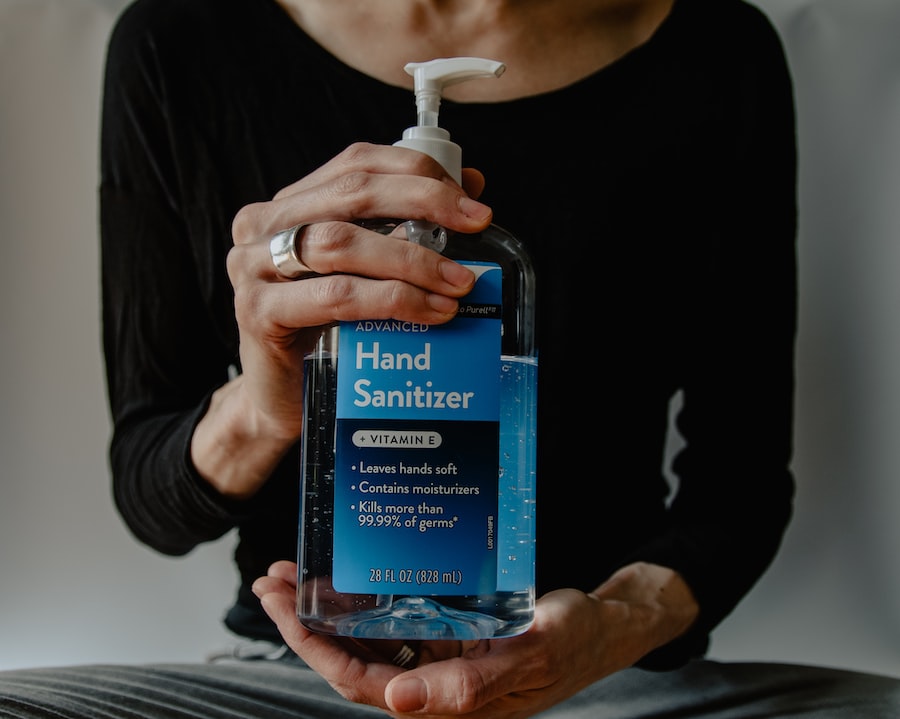Over-ear headphones have become increasingly popular in recent years, with many people using them to enjoy their favorite music or immerse themselves in gaming experiences. However, it is important to recognize the potential risks that these headphones pose to ear health. The ears are delicate organs, and prolonged exposure to loud sounds can lead to irreversible damage, including hearing loss and tinnitus. Therefore, it is crucial to prioritize ear health when using over-ear headphones to ensure long-term enjoyment of music.
Music is a universal language that brings joy and entertainment to people all over the world. Whether it’s listening to your favorite band or discovering new artists, music has the power to uplift our spirits and evoke emotions. However, if we neglect our ear health while indulging in our passion for music, we may find ourselves unable to fully enjoy these experiences in the future.
Understanding the Risks of Over-Ear Headphones on Ear Health
Over-ear headphones can cause damage to the ears due to their close proximity to the eardrums. The loud volume levels produced by these headphones can lead to hearing loss and tinnitus, a condition characterized by a persistent ringing or buzzing sound in the ears. The risk of ear damage is influenced by several factors, including the volume levels and duration of use.
Listening to music at high volumes for extended periods of time can have a detrimental effect on our ears. The delicate hair cells in the inner ear can become damaged or destroyed when exposed to loud sounds for prolonged periods. This damage can result in permanent hearing loss or tinnitus.
Choosing the Right Type of Over-Ear Headphones for Your Ear Health
When selecting over-ear headphones, it is important to choose a pair that is designed with ear health in mind. Look for headphones that have noise-cancelling features, as this can help reduce the need to increase the volume to block out external noise. Noise-cancelling headphones work by actively canceling out ambient sounds, allowing you to enjoy your music at lower volumes.
In addition to noise-cancelling features, proper fit and comfort are also crucial for reducing the risk of ear damage. Ill-fitting headphones can cause discomfort and put unnecessary pressure on the ears, leading to potential damage. Look for headphones that have adjustable headbands and cushioned ear cups to ensure a comfortable fit.
Setting the Volume Levels to Prevent Ear Damage
One of the most important factors in maintaining ear health when using over-ear headphones is setting the volume levels at a safe level. Listening to music at excessively loud volumes can cause immediate damage to the ears, as well as long-term hearing loss. It is recommended to keep the volume at around 60% of the maximum level.
To help prevent accidental increases in volume, consider using headphones that have volume-limiting features. These features restrict the maximum volume output of the headphones, ensuring that you do not exceed safe listening levels. Some devices also have built-in volume limiters that can be activated in the settings.
Taking Breaks to Avoid Ear Fatigue and Discomfort
Extended listening sessions can lead to ear fatigue and discomfort, which can increase the risk of ear damage. It is important to take regular breaks during these sessions to give your ears a rest. Experts recommend taking a 10-minute break every hour of continuous headphone use.
During these breaks, it is beneficial to step away from loud environments and give your ears a chance to recover. Engage in activities that do not involve headphones or loud sounds, such as going for a walk or practicing relaxation techniques.
Cleaning Your Over-Ear Headphones to Prevent Ear Infections

Dirty headphones can harbor bacteria and fungi, which can lead to ear infections and other health issues. It is important to regularly clean your over-ear headphones to maintain ear health. Start by wiping down the ear cups and headband with a soft cloth dampened with a mild cleaning solution. Avoid using harsh chemicals or excessive moisture, as this can damage the headphones.
For a deeper clean, remove the ear pads and clean them separately. Use a soft brush or cloth to remove any debris, and then wipe them down with a mild cleaning solution. Allow the ear pads to dry completely before reattaching them to the headphones.
Using Earplugs or Noise-Cancelling Headphones to Reduce Volume Levels
In addition to selecting headphones with noise-cancelling features, using earplugs or noise-cancelling headphones can further reduce the risk of ear damage. Earplugs are small devices that fit into the ear canal and block out external noise. They can be particularly useful in loud environments, such as concerts or sporting events.
Noise-cancelling headphones work by actively canceling out ambient sounds, allowing you to enjoy your music at lower volumes. These headphones use microphones to pick up external sounds and then produce an opposite sound wave to cancel them out. This technology can help protect your ears from loud noises while still allowing you to enjoy your music.
Regular Check-Ups with an Audiologist to Monitor Your Ear Health
Regular check-ups with an audiologist are essential for monitoring your ear health and detecting any issues early on. An audiologist is a healthcare professional who specializes in diagnosing and treating hearing and balance disorders. They can perform hearing tests and provide guidance on how to protect your ears when using over-ear headphones.
It is recommended to schedule a check-up with an audiologist at least once a year, especially if you frequently use over-ear headphones or have noticed any changes in your hearing or tinnitus symptoms. During the check-up, the audiologist will evaluate your hearing and discuss any concerns or questions you may have.
Understanding the Signs and Symptoms of Ear Damage from Over-Ear Headphones
It is important to be aware of the signs and symptoms of ear damage from over-ear headphones. If you experience any of the following symptoms, it is recommended to seek medical attention:
– Ringing, buzzing, or hissing sounds in the ears (tinnitus)
– Difficulty hearing or understanding speech
– Sensitivity to loud sounds
– Ear pain or discomfort
– Dizziness or balance problems
If you notice any of these symptoms, it is important to take a break from using over-ear headphones and consult with a healthcare professional. Early detection and intervention can help prevent further damage and improve outcomes.
Maintaining Ear Health for Long-Term Enjoyment of Music
In conclusion, maintaining ear health is crucial for long-term enjoyment of music when using over-ear headphones. The popularity of these headphones has grown significantly in recent years, but it is important to recognize the potential risks they pose to our ears. By understanding the risks, choosing the right headphones, setting safe volume levels, taking breaks, cleaning your headphones, using earplugs or noise-cancelling headphones, scheduling regular check-ups with an audiologist, and being aware of the signs and symptoms of ear damage, we can protect our ears and continue to enjoy music for years to come. So, take the necessary steps to protect your ears and ensure that your love for music remains a lifelong passion.
Taking care of ear health is crucial, especially for those who frequently use over-ear headphones. While enjoying your favorite tunes or podcasts, it’s important to be mindful of potential risks to your hearing. In a related article, “The Psychology of Money: Understanding Personal Finance,” you can explore the connection between financial well-being and overall health. Understanding how to manage your finances can help alleviate stress and provide a solid foundation for a balanced lifestyle. Check out the article here to gain valuable insights into personal finance and its impact on your well-being.
FAQs
What are over-ear headphones?
Over-ear headphones are a type of headphones that have ear cups that completely cover the ears. They are designed to provide better sound quality and noise isolation compared to other types of headphones.
What are the risks of using over-ear headphones?
Using over-ear headphones for extended periods of time can lead to ear fatigue, discomfort, and even hearing loss. This is because the headphones can put pressure on the ears and trap heat and moisture, which can lead to the growth of bacteria and fungi.
How can I take care of my ear health when using over-ear headphones?
To take care of your ear health when using over-ear headphones, you should take regular breaks, clean your headphones regularly, and adjust the volume to a safe level. You can also use noise-cancelling headphones to reduce the need for high volume levels.
What is a safe volume level when using over-ear headphones?
A safe volume level when using over-ear headphones is around 60% of the maximum volume. You should also avoid using headphones for more than 60 minutes at a time and take regular breaks to give your ears a rest.
How can I clean my over-ear headphones?
To clean your over-ear headphones, you can use a soft, dry cloth to wipe down the ear cups and headband. You can also use a damp cloth with a mild soap solution to clean the ear cups and remove any dirt or grime. Avoid using harsh chemicals or abrasive materials that can damage the headphones.









Add Comment